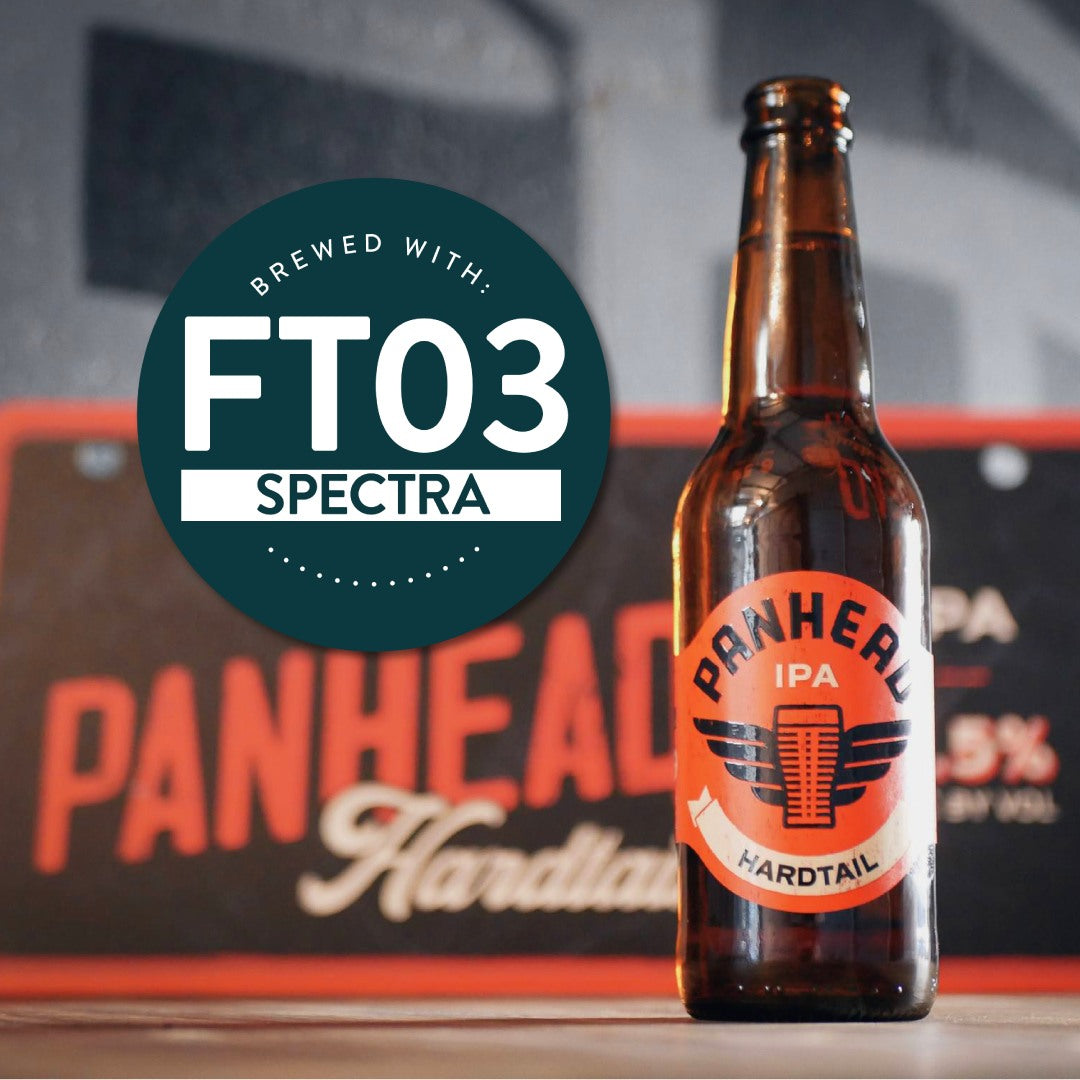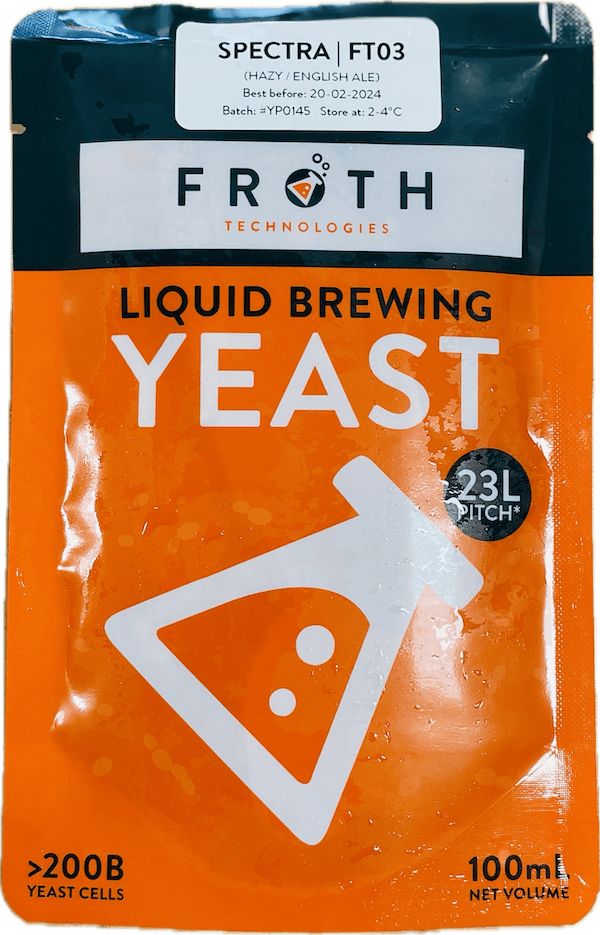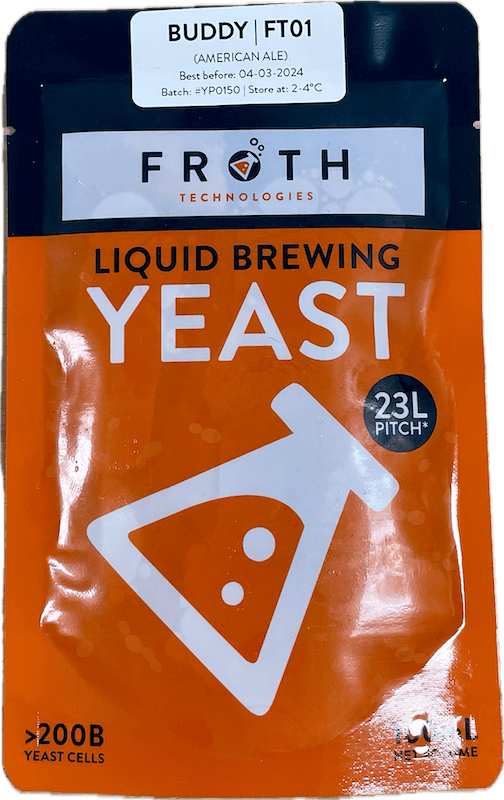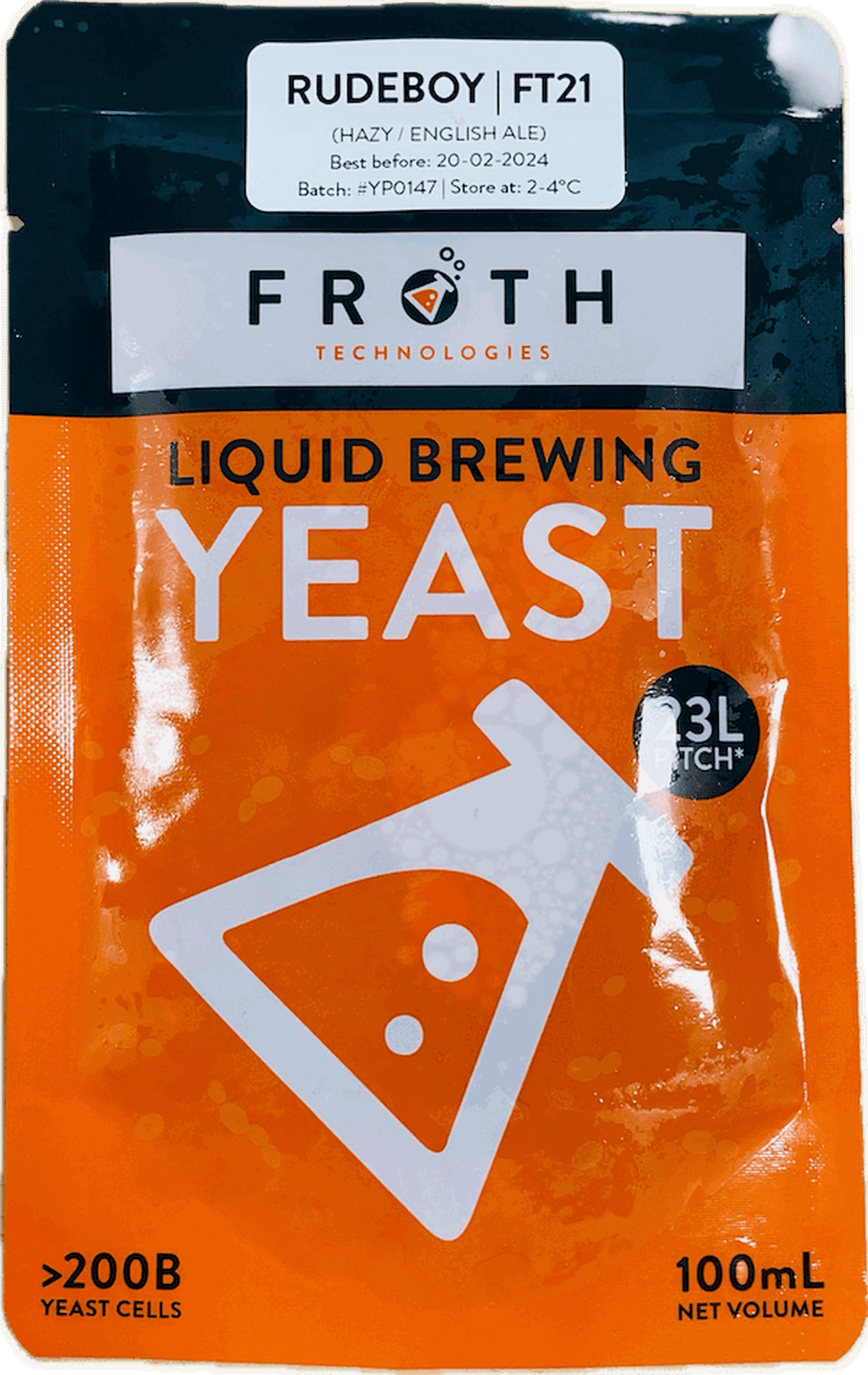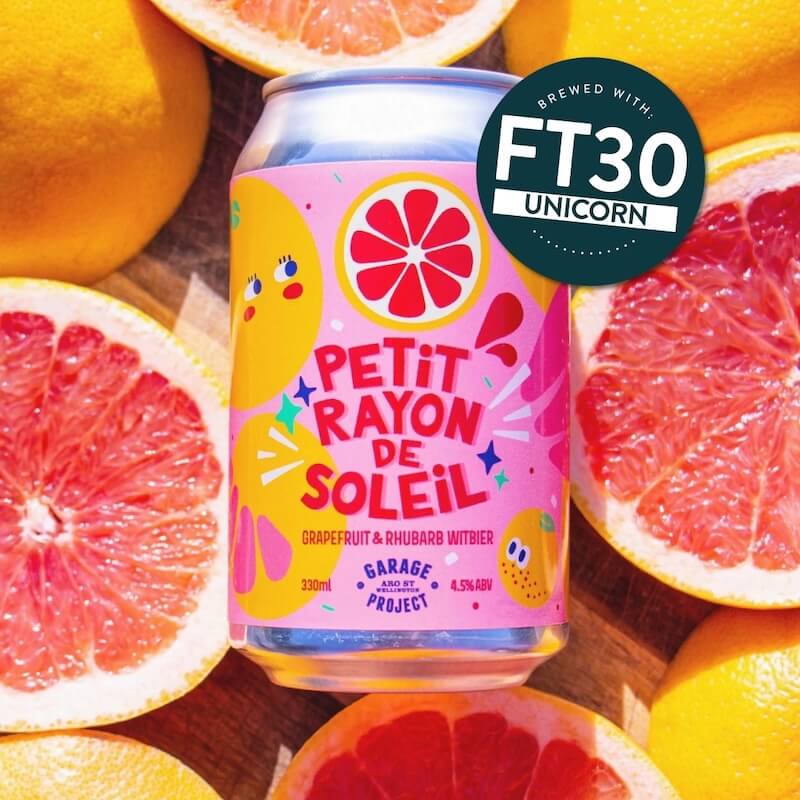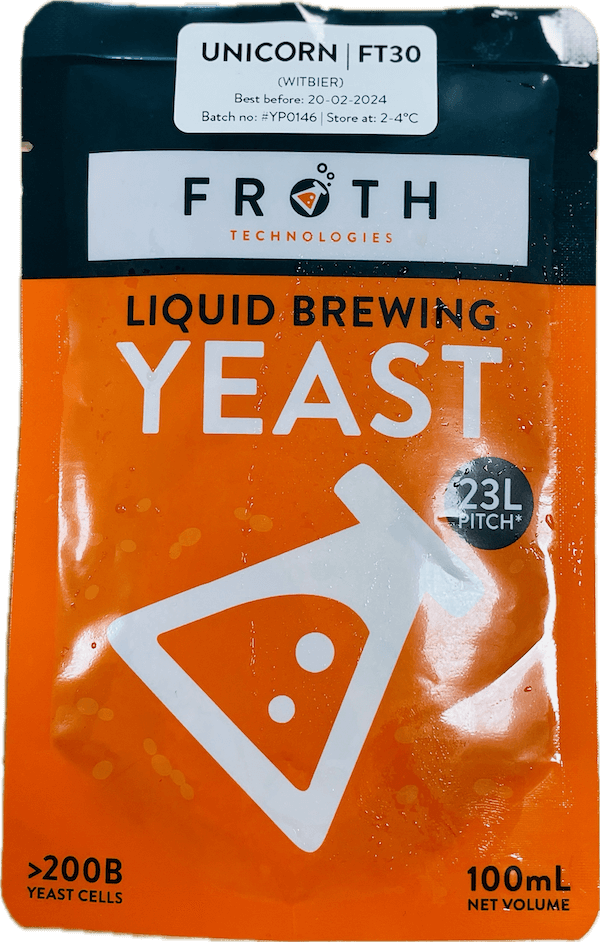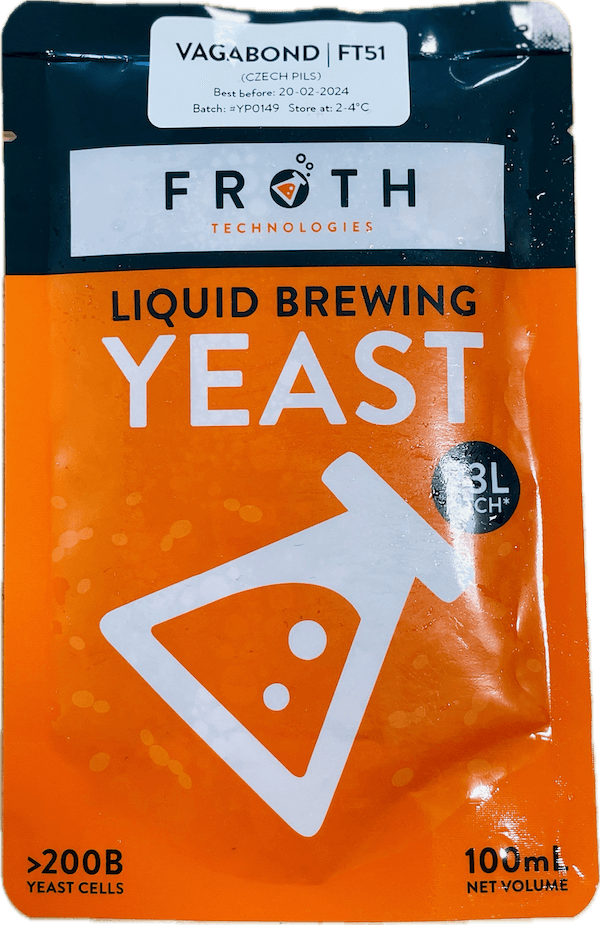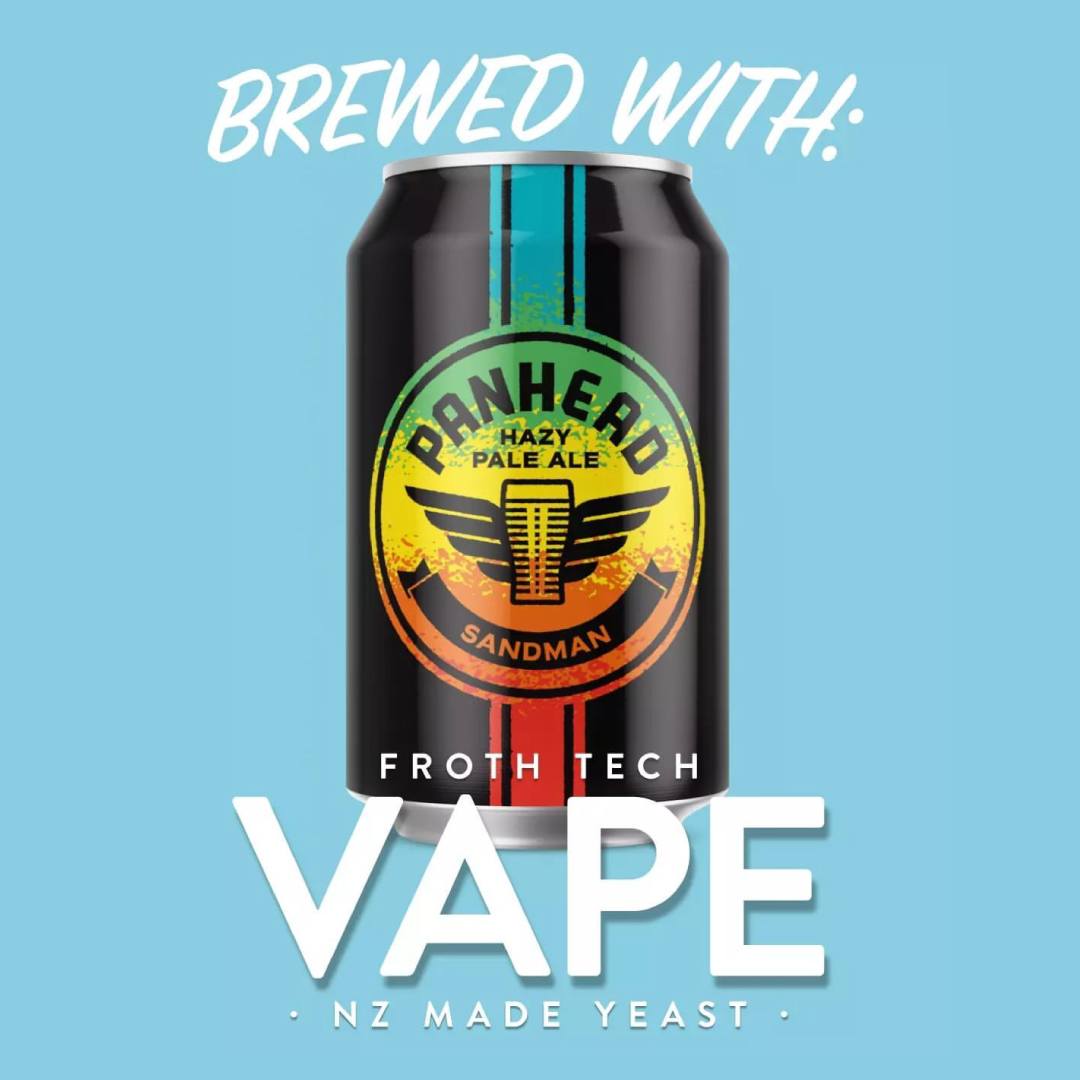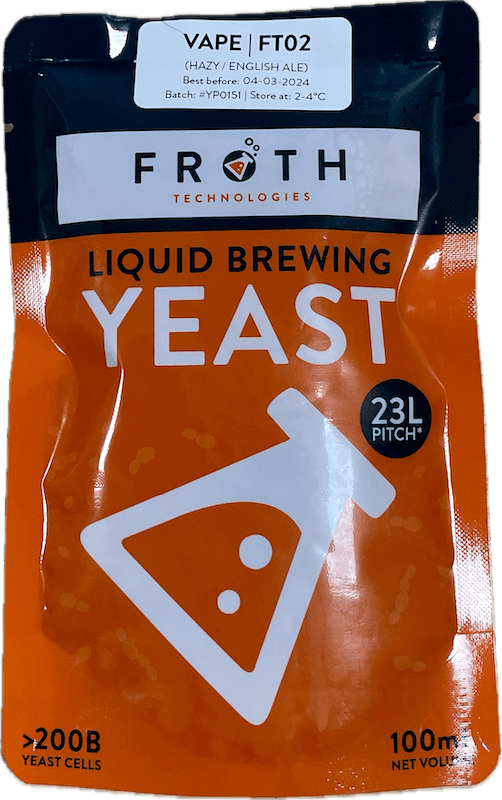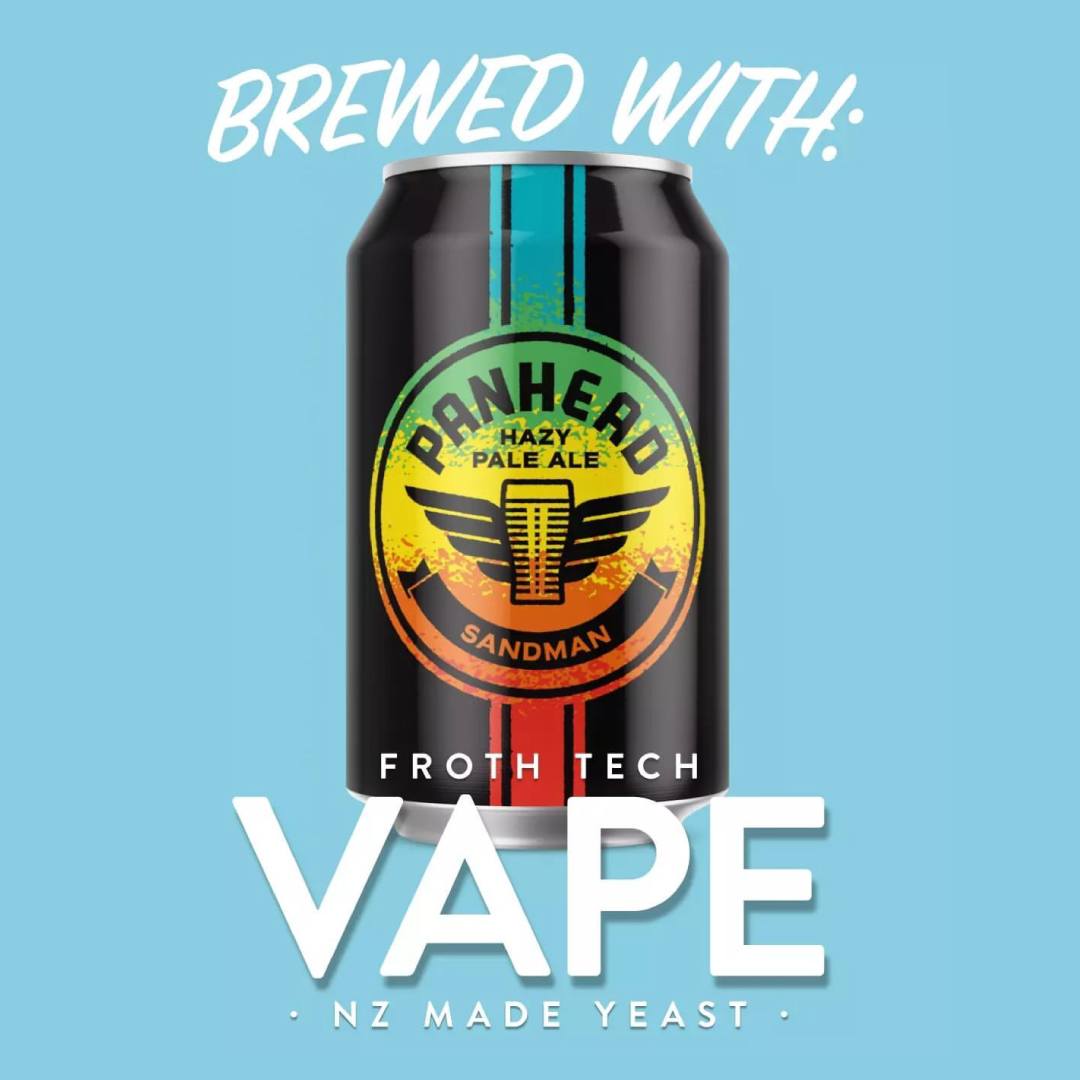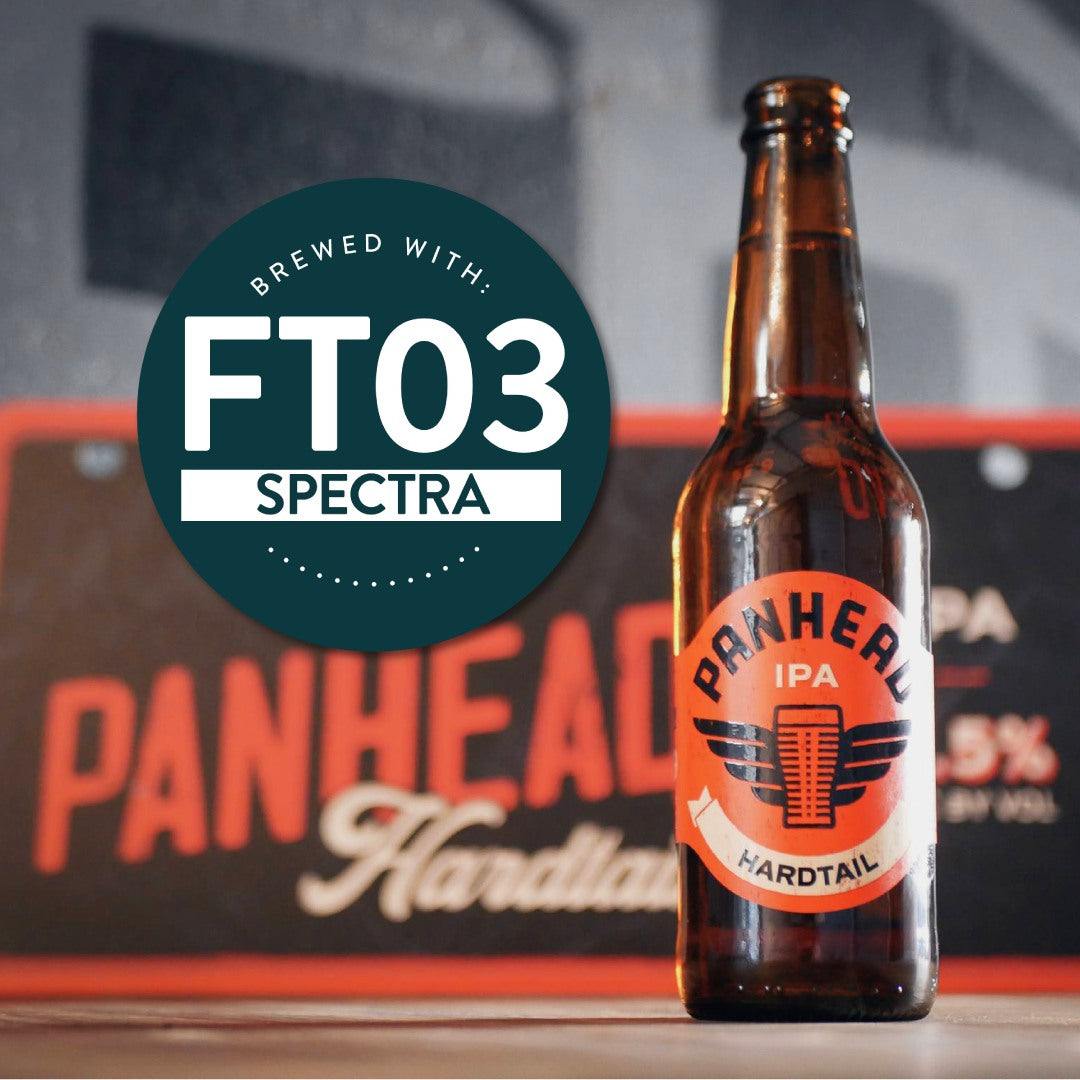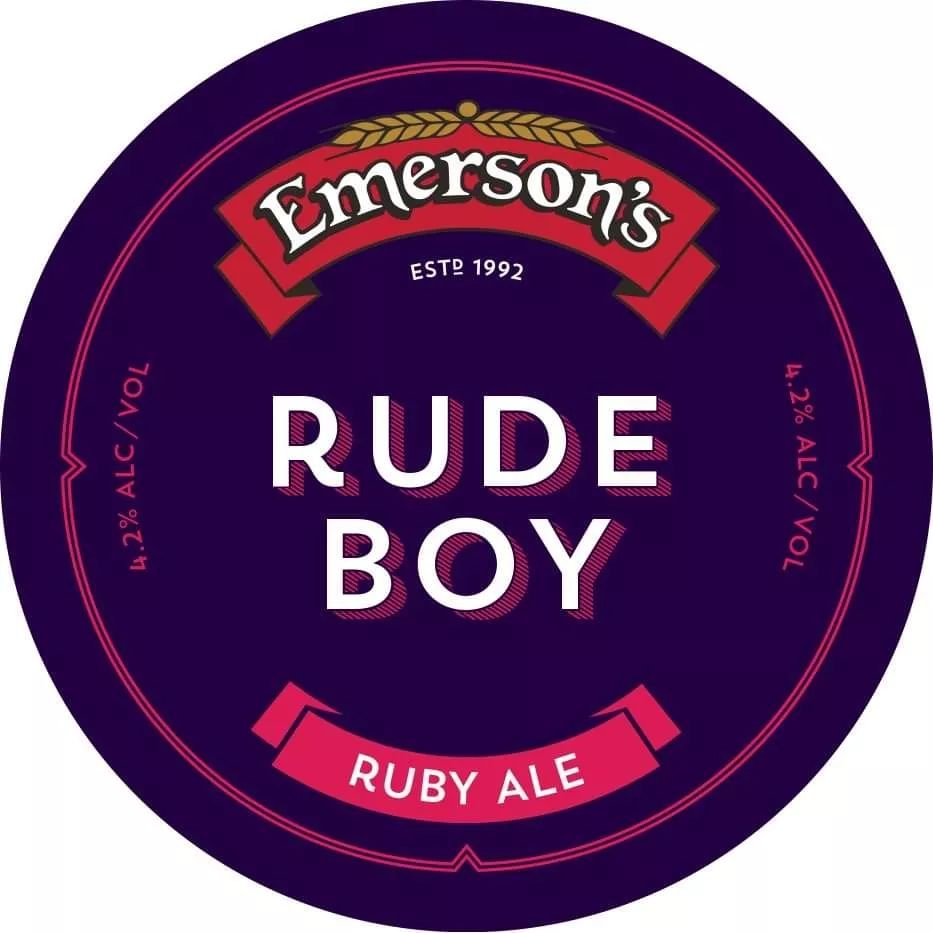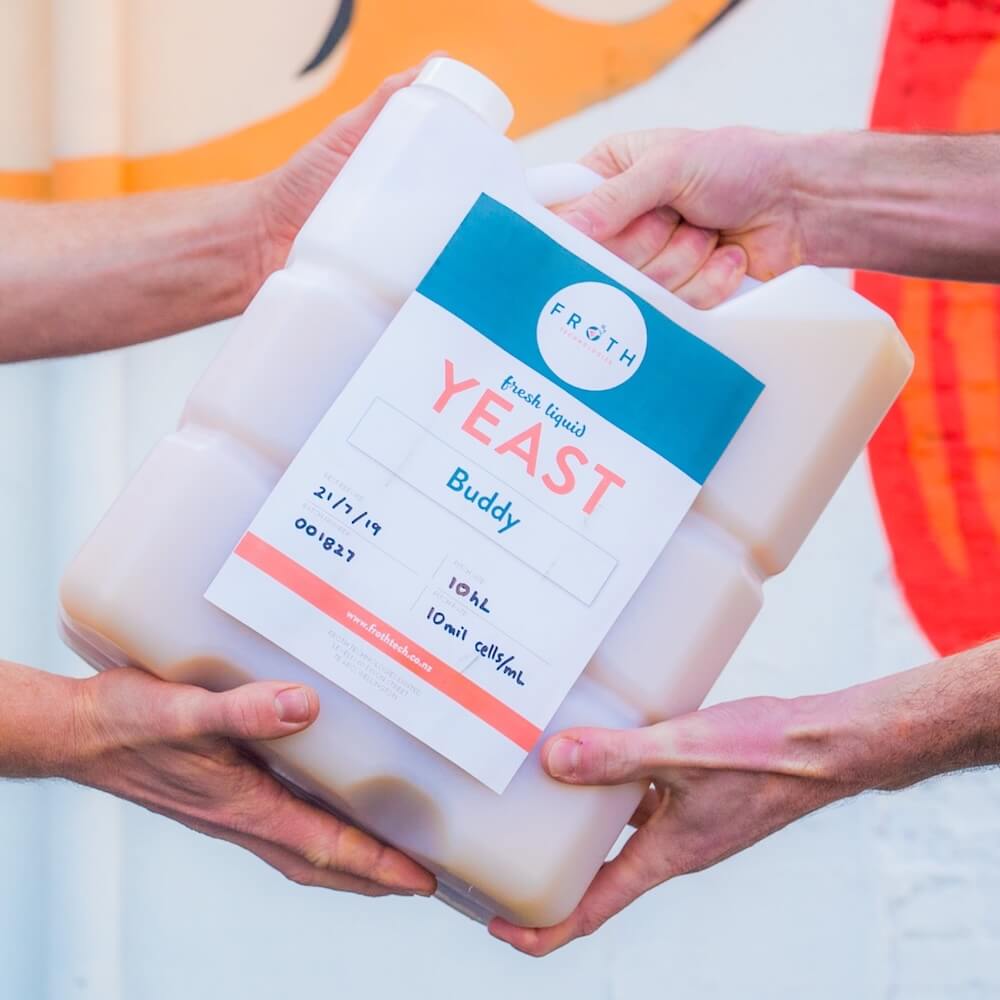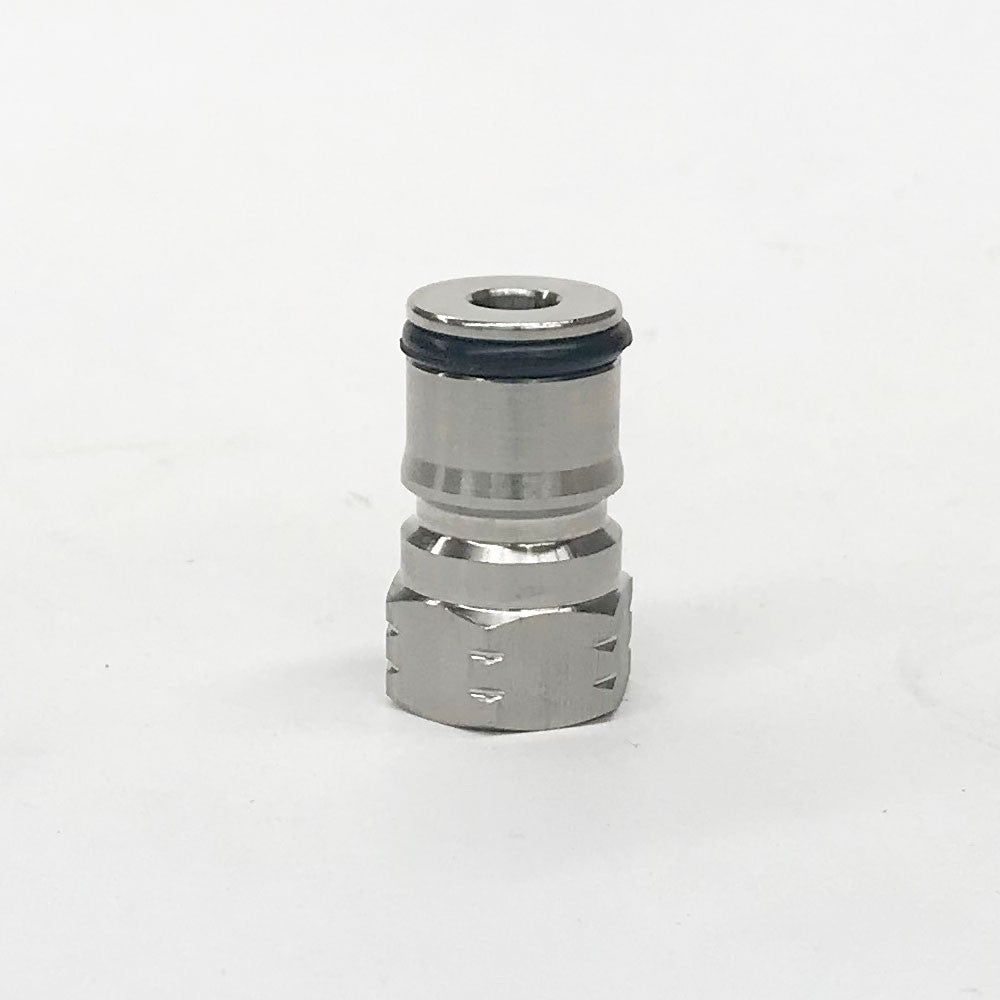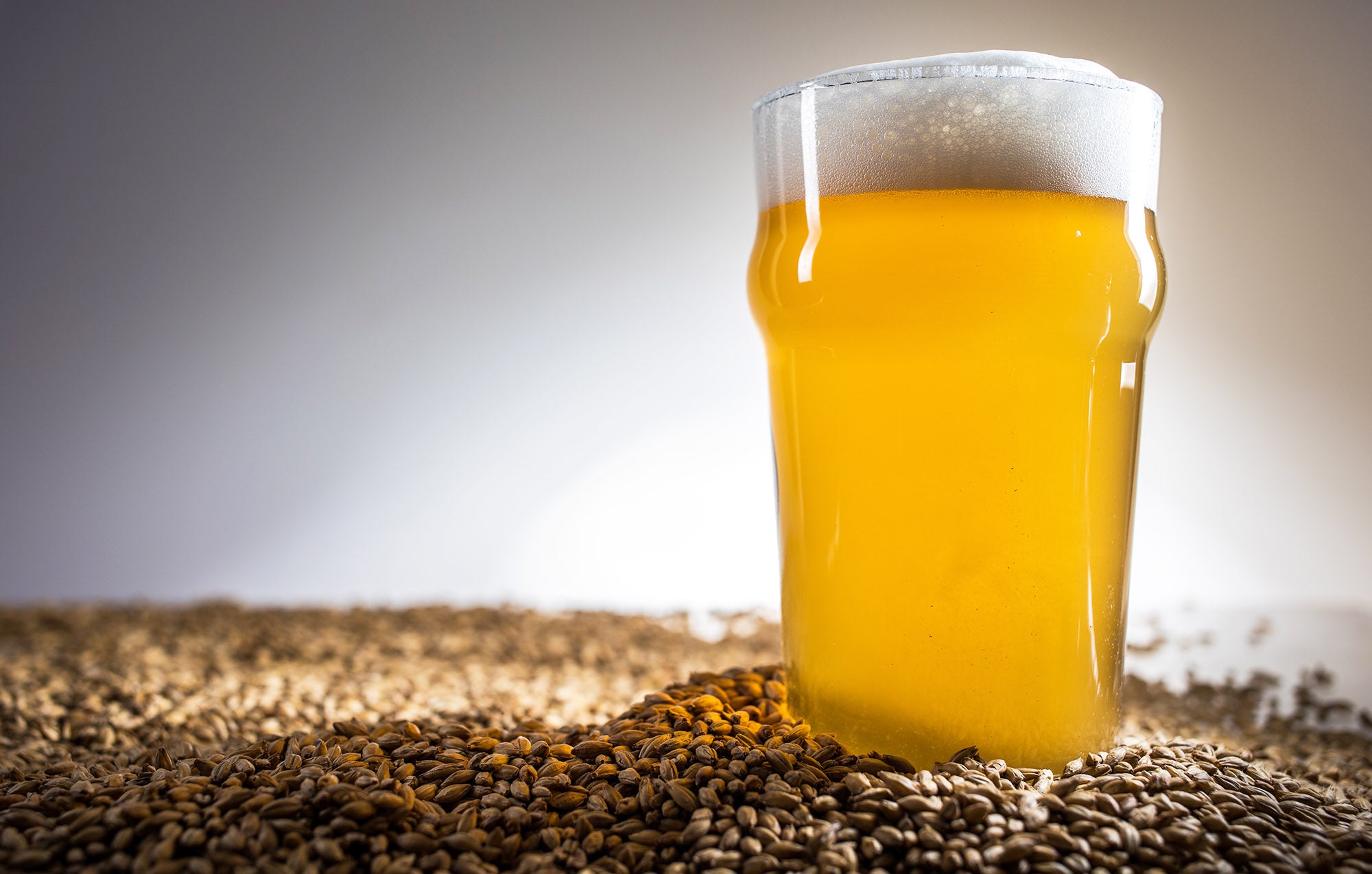
Produced in Wellington NZ, when you drink a beverage brewed with Froth Tech yeast, you’re tasting the end result of a custom designed propagation process producing the freshest, purest, healthiest yeast possible.
One pouch of yeast is good for:
-
23L of wort up to 1.048 or
-
20L of wort up to 1.060
Contains more than 200B yeast cells. For Lagers or high gravity ales use two pouches or make a starter.
Sort by:
Explore the more delicate textures and indulge in a spectrum of radiant flavour & aroma. Spectra boasts a more robust attenuation capacity than many of its counterparts, while exhibiting an elegant ester profile and velvety mouthfeel. This prolific strain dances with hops & protein to offer a mesmerising glow in New England IPA’s, while its Old English origins make it a wise choice for amber & dark ales.
Attenuation: 72-85% | Flocculation: Low-Med | Alcohol Tolerance: 10% | Temp: 17-21°C
Assumed Origin: Unknown (London)
One pouch of yeast is good for:
-
23L of wort up to 1.048 or
-
20L of wort up to 1.060
Contains more than 200B yeast cells. For Lagers or high gravity ales use two pouches or make a starter.
How To:
- Refrigerate until ready to use.
- Massage pouch contents to mix into consistent slurry.
- Sanitise the outside of the pouch.
- Tear open pouch and pitch your yeast into well aerated wort at the desired temp.
Swelling of the pack is not an indication of a problem with the yeast. The yeast is still perfectly fine to use (assuming it is within date and has been stored properly). We store all of our Froth Yeast in the fridge between 2℃ - 4℃ and include an ice pack with each order to keep the yeast cold whilst in transit.
Here is a great article from Omega Yeast that explains what causes yeast pouches to swell and why it is not something to be concerned with in and of itself.
Includes an ice pack for shipping at no additional cost to keep your yeast cool during transit. Refrigerate as soon as you receive your order.
Attenuation: 72-80% | Flocculation: Medium | Alcohol Tolerance: 11% | Temp: 19-22°C
Assumed Origin: Sierra Nevada
One pouch of yeast is good for:
-
23L of wort up to 1.048 or
-
20L of wort up to 1.060
Contains more than 200B yeast cells. For Lagers or high gravity ales use two pouches or make a starter.
How To:
- Refrigerate until ready to use.
- Massage pouch contents to mix into consistent slurry.
- Sanitise the outside of the pouch.
- Tear open pouch and pitch your yeast into well aerated wort at the desired temp.
Swelling of the pack is not an indication of a problem with the yeast. The yeast is still perfectly fine to use (assuming it is within date and has been stored properly). We store all of our Froth Yeast in the fridge between 2℃ - 4℃ and include an ice pack with each order to keep the yeast cold whilst in transit.
Here is a great article from Omega Yeast that explains what causes yeast pouches to swell and why it is not something to be concerned with in and of itself.
Includes an ice pack for shipping at no additional cost to keep your yeast cool during transit. Refrigerate as soon as you receive your order.
Attenuation: 73-79% | Flocculation: Medium | Alcohol Tolerance: 10% | Temp: 9-13°C
Assumed Origin: Weinhenstephan
One pouch of yeast is good for:
-
23L of wort up to 1.048 or
-
20L of wort up to 1.060
Contains more than 200B yeast cells. For Lagers or high gravity ales use two pouches or make a starter.
How To:
- Refrigerate until ready to use.
- Massage pouch contents to mix into consistent slurry.
- Sanitise the outside of the pouch.
- Tear open pouch and pitch your yeast into well aerated wort at the desired temp.
Swelling of the pack is not an indication of a problem with the yeast. The yeast is still perfectly fine to use (assuming it is within date and has been stored properly). We store all of our Froth Yeast in the fridge between 2℃ - 4℃ and include an ice pack with each order to keep the yeast cold whilst in transit.
Here is a great article from Omega Yeast that explains what causes yeast pouches to swell and why it is not something to be concerned with in and of itself.
Includes an ice pack for shipping at no additional cost to keep your yeast cool during transit. Refrigerate as soon as you receive your order.
Named by Dale Gould as a salute to the UK Ska music scene, Rudeboy is a go-getter when it comes to bright ales - or fuller sweeter Hazies thanks to the lower attenuation . This boy is highly flocculant and rather clean, with a neutral profile that nudges mild malt and soft fruit aromatics to the forefront. Rudeboy scrubs up well bright in all sorts from ESBs and Milds, Dark & Amber ales, as well as new and old world IPAs, Pale Ales & Hazies.
Attenuation: 68-72% | Flocculation: High | Alcohol Tolerance: 9% | Temp: 18-22°C
Assumed Origin: Young’s Brewery
One pouch of yeast is good for:
-
23L of wort up to 1.048 or
-
20L of wort up to 1.060
Contains more than 200B yeast cells. For Lagers or high gravity ales use two pouches or make a starter.
How To:
- Refrigerate until ready to use.
- Massage pouch contents to mix into consistent slurry.
- Sanitise the outside of the pouch.
- Tear open pouch and pitch your yeast into well aerated wort at the desired temp.
Swelling of the pack is not an indication of a problem with the yeast. The yeast is still perfectly fine to use (assuming it is within date and has been stored properly). We store all of our Froth Yeast in the fridge between 2℃ - 4℃ and include an ice pack with each order to keep the yeast cold whilst in transit.
Here is a great article from Omega Yeast that explains what causes yeast pouches to swell and why it is not something to be concerned with in and of itself.
Includes an ice pack for shipping at no additional cost to keep your yeast cool during transit. Refrigerate as soon as you receive your order.
Attenuation: 72-78% | Flocculation: Low-Med | Alcohol Tolerance: 10% | Temp: 18-24°C
Assumed Origin: Hoegaarden
One pouch of yeast is good for:
-
23L of wort up to 1.048 or
-
20L of wort up to 1.060
Contains more than 200B yeast cells. For Lagers or high gravity ales use two pouches or make a starter.
How To:
- Refrigerate until ready to use.
- Massage pouch contents to mix into consistent slurry.
- Sanitise the outside of the pouch.
- Tear open pouch and pitch your yeast into well aerated wort at the desired temp.
Swelling of the pack is not an indication of a problem with the yeast. The yeast is still perfectly fine to use (assuming it is within date and has been stored properly). We store all of our Froth Yeast in the fridge between 2℃ - 4℃ and include an ice pack with each order to keep the yeast cold whilst in transit.
Here is a great article from Omega Yeast that explains what causes yeast pouches to swell and why it is not something to be concerned with in and of itself.
Includes an ice pack for shipping at no additional cost to keep your yeast cool during transit. Refrigerate as soon as you receive your order.
Attenuation: 71-75% | Flocculation: Med-High | Alcohol Tolerance: 9% | Temp: 9-13°C
Assumed Origin: Budêjovický Budvar
One pouch of yeast is good for:
-
23L of wort up to 1.048 or
-
20L of wort up to 1.060
Contains more than 200B yeast cells. For Lagers or high gravity ales use two pouches or make a starter.
How To:
- Refrigerate until ready to use.
- Massage pouch contents to mix into consistent slurry.
- Sanitise the outside of the pouch.
- Tear open pouch and pitch your yeast into well aerated wort at the desired temp.
Swelling of the pack is not an indication of a problem with the yeast. The yeast is still perfectly fine to use (assuming it is within date and has been stored properly). We store all of our Froth Yeast in the fridge between 2℃ - 4℃ and include an ice pack with each order to keep the yeast cold whilst in transit.
Here is a great article from Omega Yeast that explains what causes yeast pouches to swell and why it is not something to be concerned with in and of itself.
Includes an ice pack for shipping at no additional cost to keep your yeast cool during transit. Refrigerate as soon as you receive your order.
Attenuation: 71-75% | Flocculation: Medium | Alcohol Tolerance: 10% | Temp: 19-23°C
Assumed Origin: Boddington’s
One pouch of yeast is good for:
-
23L of wort up to 1.048 or
-
20L of wort up to 1.060
Contains more than 200B yeast cells. For Lagers or high gravity ales use two pouches or make a starter.
How To:
- Refrigerate until ready to use.
- Massage pouch contents to mix into consistent slurry.
- Sanitise the outside of the pouch.
- Tear open pouch and pitch your yeast into well aerated wort at the desired temp.
Swelling of the pack is not an indication of a problem with the yeast. The yeast is still perfectly fine to use (assuming it is within date and has been stored properly). We store all of our Froth Yeast in the fridge between 2℃ - 4℃ and include an ice pack with each order to keep the yeast cold whilst in transit.
Here is a great article from Omega Yeast that explains what causes yeast pouches to swell and why it is not something to be concerned with in and of itself.
Includes an ice pack for shipping at no additional cost to keep your yeast cool during transit. Refrigerate as soon as you receive your order.
It turns out, the Rangitīkei District is a pretty funky place; it's the origin of Wilding, the first-ever commercial brewers yeast isolated from the New Zealand wilderness. This yeast isolate was collected as a wild mixed culture from an air-trap (nano koelschip). Subtle spice from phenols, fruity banana, pear and apple esters, and a dry lager-like finish that is surprisingly clean. Validated by PCR as: Saccharomyces cerevisiae var. diastaticus.
Attenuation: 84-93% | Flocculation: Low-Med | Alcohol Tolerance: 10% | Temp: 17-23°C
Origin: Rangitīkei District, NZ | STA1: Positive | Pitch Rate: 0.5M cells / mL / °P
One pouch of yeast is good for:
-
23L of wort up to 1.048 or
-
20L of wort up to 1.060
Contains more than 200B yeast cells. For Lagers or high gravity ales use two pouches or make a starter.
How To:
- Refrigerate until ready to use.
- Massage pouch contents to mix into consistent slurry.
- Sanitise the outside of the pouch.
- Tear open pouch and pitch your yeast into well aerated wort at the desired temp.
Swelling of the pack is not an indication of a problem with the yeast. The yeast is still perfectly fine to use (assuming it is within date and has been stored properly). We store all of our Froth Yeast in the fridge between 2℃ - 4℃ and include an ice pack with each order to keep the yeast cold whilst in transit.
Here is a great article from Omega Yeast that explains what causes yeast pouches to swell and why it is not something to be concerned with in and of itself.
Includes an ice pack for shipping at no additional cost to keep your yeast cool during transit. Refrigerate as soon as you receive your order.
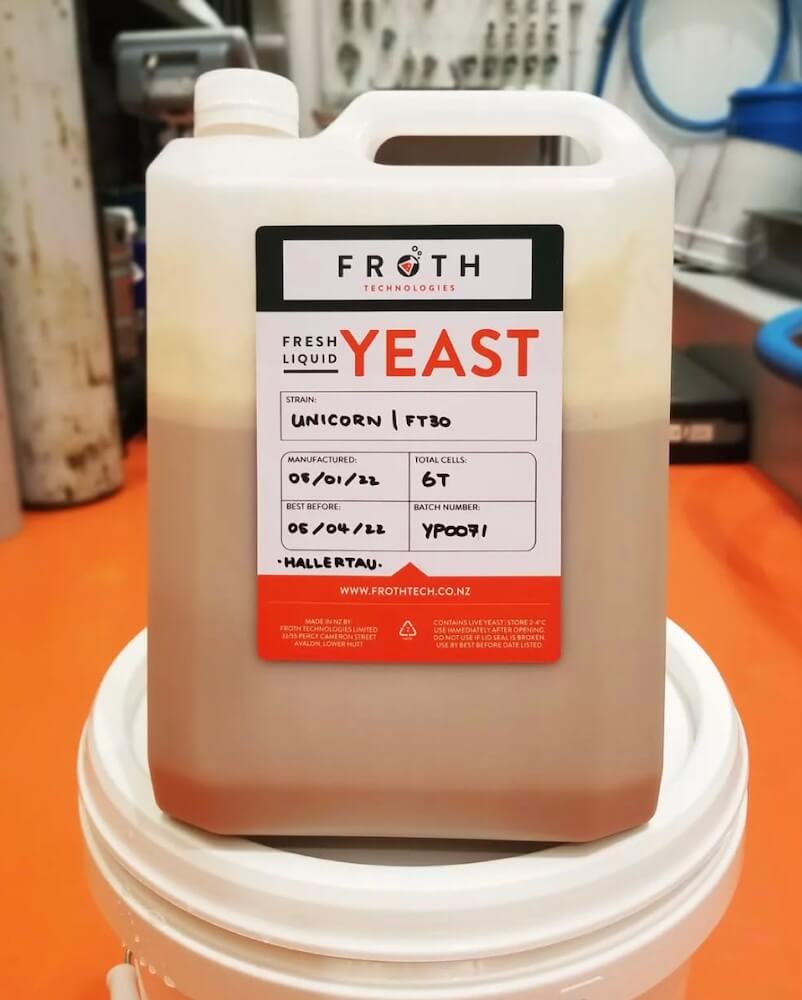
FAQs
One pouch of Froth Tech yeast contains 200 Billion cells. This is enough to inoculate 23L of wort up to 1.048 SG, or 20L of wort up to 1.060 SG. For Lagers or high gravity ales (over and above 1.060), use two pouches or make a starter.
Your yeast pouch should be stored cold in your fridge at 1-4°C. Typical household fridges are set to 4°C.
- Refrigerate your pouch until ready to use.
- Massage pouch contents to mix into a consistent slurry.
- Sanitise the outside of the pouch.
- Tear or cut open pouch and pitch your yeast into well aerated wort at the desired temp.
A yeast starter is a process of growing your yeast population by adding it to wort. If you don’t have enough yeast for your brew, you can grow it up in this way, or you can use additional pouches of yeast. One yeast pouch is suitable as a direct pitch for 20-23L of ale wort. See the questions above: ‘How much yeast do I need?’
Check out these detailed yeast starter instructions at BYO.com
In brewing a 'pitch rate' refers to the amount of yeast added to wort; specifically how many yeast cells are added in comparison to the available sugars in the wort. This is usually expressed as X Million cells of yeast, per Milliliter, per degree Plato (degrees Plato are an alternative measure of density to Specific Gravity). (Conversion calculator here)
In general the more total sugar in your wort, the more yeast you will need in order to achieve a strong and healthy fermentation.
Different styles of beer, or different desired brewing outcomes, require different pitch rates. Typically, a higher pitch rate will produce a cleaner fermentation profile, while a lower one will encourage more ester production. Lagers and cooler fermentations require a higher pitch rate as colder temperatures slow down yeasts metabolic activity. Wort with higher sugar concentration also requires a higher overall pitch rate due to the stresses imposed on the yeast through higher alcohol concentrations produced during fermentation.
Because of this, we recommend different pitch rates for higher gravity beers, or cold fermented beers.
Froth Technologies pitch rates are based on beer industry best practice:
• ALES up to 15°P: 0.75M cells / mL / °P
• ALES over 15°P: 1.0M cells / mL / °P
• LAGERS: 1.5M cells / mL / °P
How does a Froth Tech home brew pouch stack up?
Example for a 20L brew at 1.052 SG / 13°P
Calculate total sugars and volume:
20,000(mL) x 13°P
=260,000
↪260,000 x 750,000 (ALE PITCH RATE)
=195 Billion cells required (One pouch. Contains >200B cells)
-OR-
↪260,000 x 1,500,000 (LAGER PITCH RATE)
=390 Billion cells required (Two pouches - or make a starter)
We recommend using our yeast pouches within 3 months of manufacture. The 'Best Before' date is stated on each pouch. Liquid yeast is perishable, so the sooner you use it the healthier it will be. We have informed our best before dates through monitoring the viability and vitality of our stains over time after packaging, and have elected to set a 3 month best before date as our monitoring shows that up to this date the yeast is still in good metabolic condition.
Using yeast outside of this 3 month period doesn't mean all the yeast is all dead, but it will have reduced metabolic activity. You can prepare a yeast starter to rejuvenate your cell population prior to brewing.
Froth Tech brewing yeast is raised in a carefully designed growth medium containing all NZ ingredients: Water, Barley Malt Extract, Hop Extract (Contains: Gluten)
We produce our pure yeast cultures at our custom-designed yeast laboratory in Avalon, Lower Hutt, Aotearoa NZ. We are not able to offer tours at this stage, and we do not offer retail sales.
Your pouch may inflate slightly during transit. This is normal, due to the active yeast slurry inside releasing dissolved CO2 gas, or snacking on some remaining sugar molecules. Take care when opening.
Yes! You most definitely do. Dissolving oxygen into your wort through aeration or oxygenation is an essential step to ensuring a healthy fermentation. Yeast need oxygen in order to effectively grow the cell numbers required to undertake a healthy fermentation. There are a few different methods to achieve this, described in this article by our mates at Grainfather.
We recommend adding a yeast nutrient to your wort, to support your yeast, it’s fermentation performance and final flavour profile. We are looking to offer a powdered yeast nutrient product to home brewers. If this is something you would like to be able to purchase - let us know!
Yeast products from Froth Technologies (and most other labs) come with a stated attenuation range. In general, the range tends to be plus or minus 5% from the average attenuation observed over fermentation in an average wort. A strain with an average attenuation of 75% in the lab will typically be sold with a stated range of 70-80%. This doesn't mean that this yeast will only attenuate between 70-80%. Mashing, pitch rates, stresses and general yeast health can influence attenuation below or above this range. For example, if you were to pitch a yeast with a stated attenuation range of 65-75% into a highly fermentable wort, it would not be uncommon for it to exceed the stated range.



